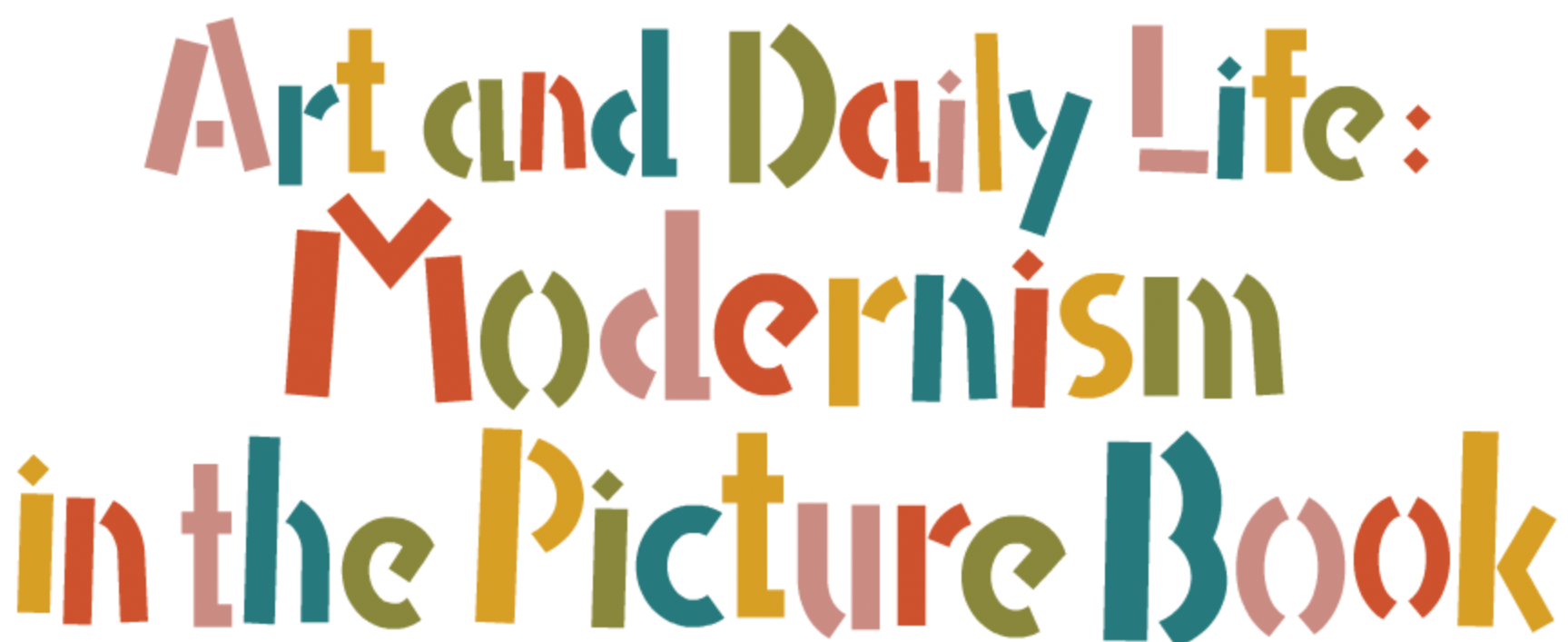本文
Bibliography

About Two Squares
To children, to all CHILDREN
A suprematist tale about two squares in 6 constructions
To children, to all CHILDREN
A suprematist tale about two squares in 6 constructions
про два квадрата
Sythian; Berlin.
1922,
20 pages.
280x223 mm.
1/19
About Two Squares

2/19 Push an image to enlarge
(♪) About two squares. El Lissitzky
About Two Squares
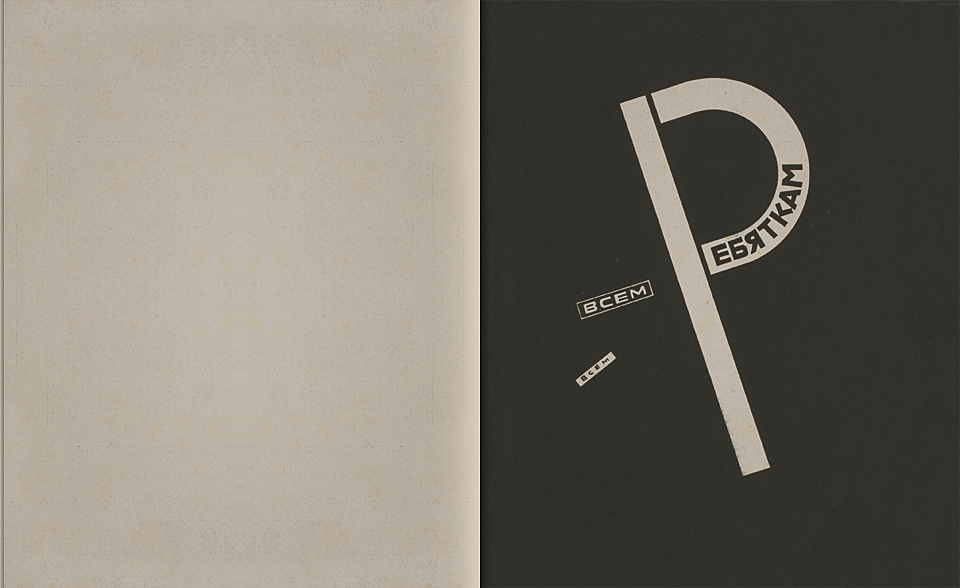
3/19 Push an image to enlarge
(♪) To children, to all children
About Two Squares
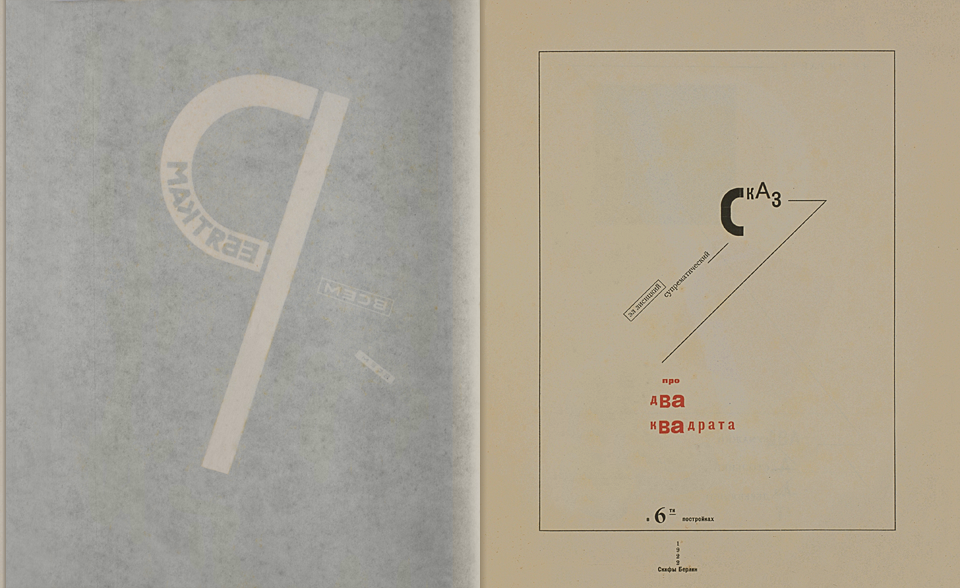
4/19 Push an image to enlarge
(♪) El Lissitzky. A suprematist tale about two squares in 6 constructions. 1922 Sythian Berlin
About Two Squares
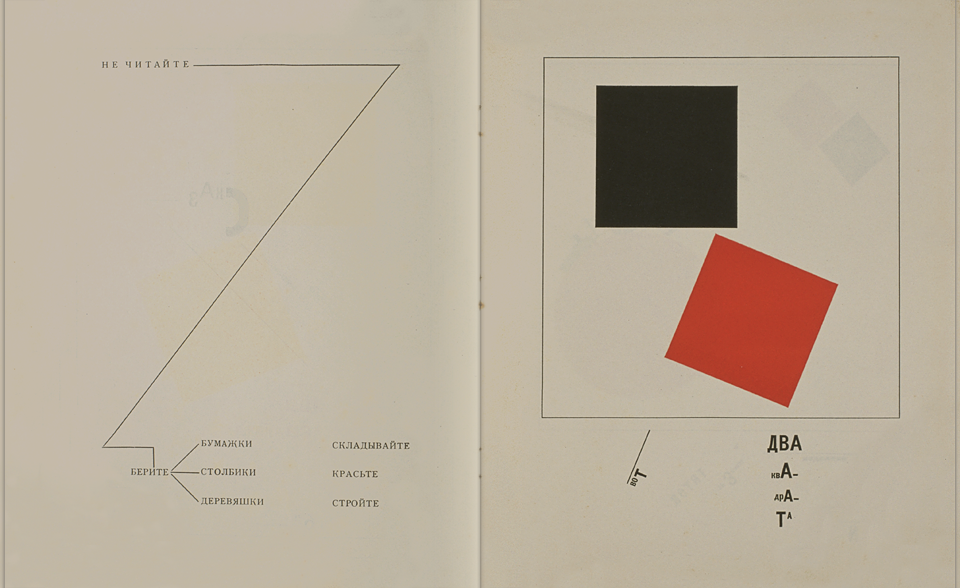
5/19 Push an image to enlarge
(♪) Don’t read. Take paper. Columns. Blocks. Fold. Color. Build.
(♪) There are two squares.
(♪) There are two squares.
About Two Squares
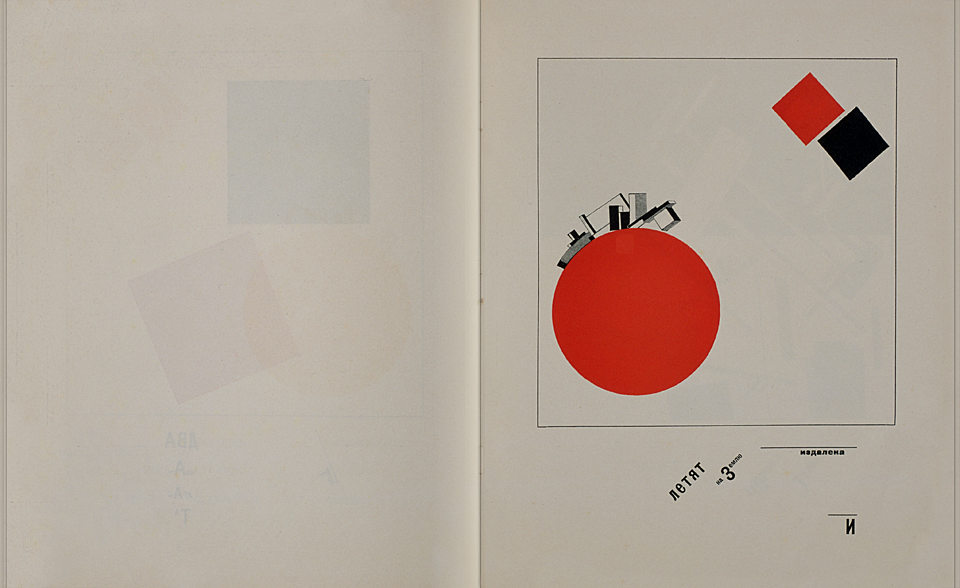
6/19 Push an image to enlarge
(♪) Flying toward earth from afar and
About Two Squares
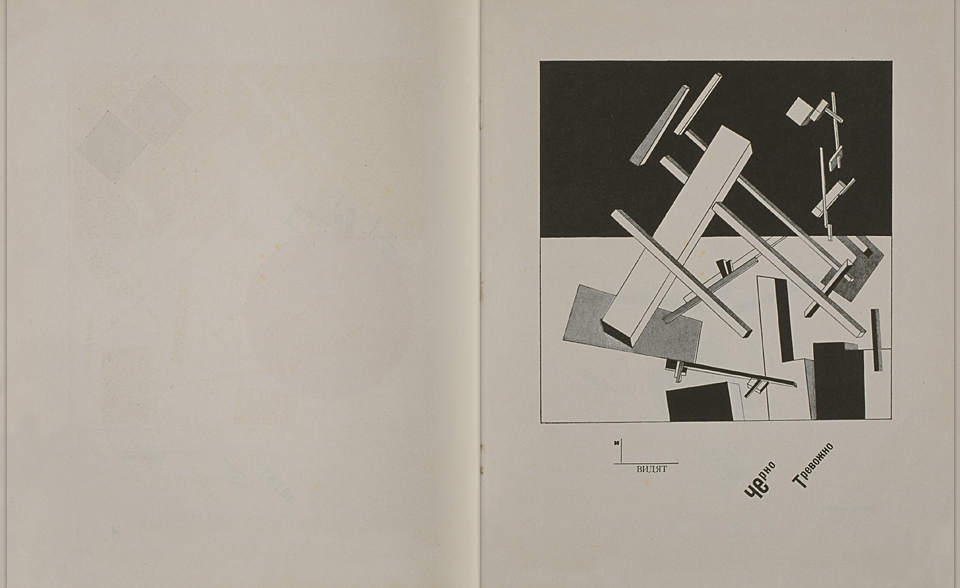
7/19 Push an image to enlarge
(♪) What they see. A black chaos.
About Two Squares
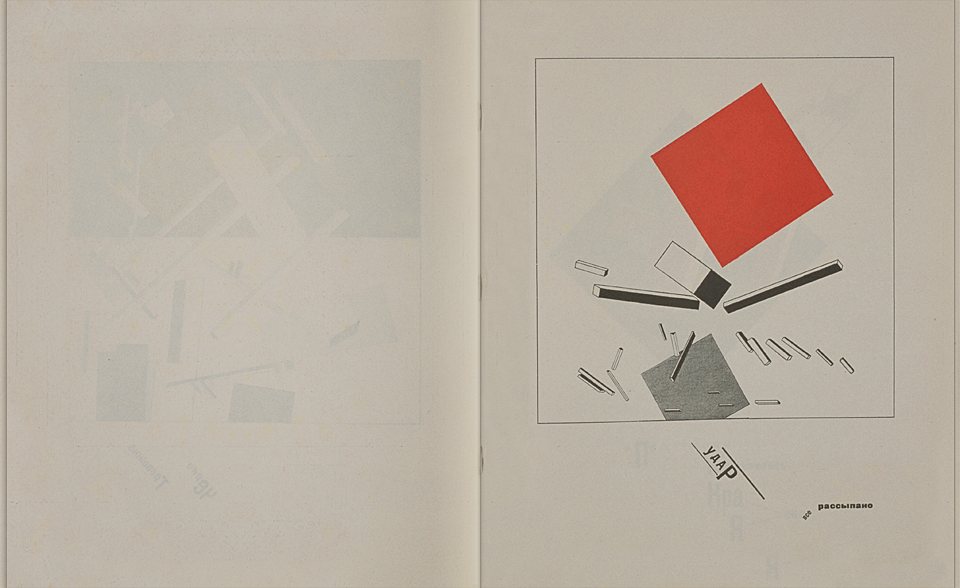
8/19 Push an image to enlarge
(♪) Crash! Things scattered everywhere.
About Two Squares
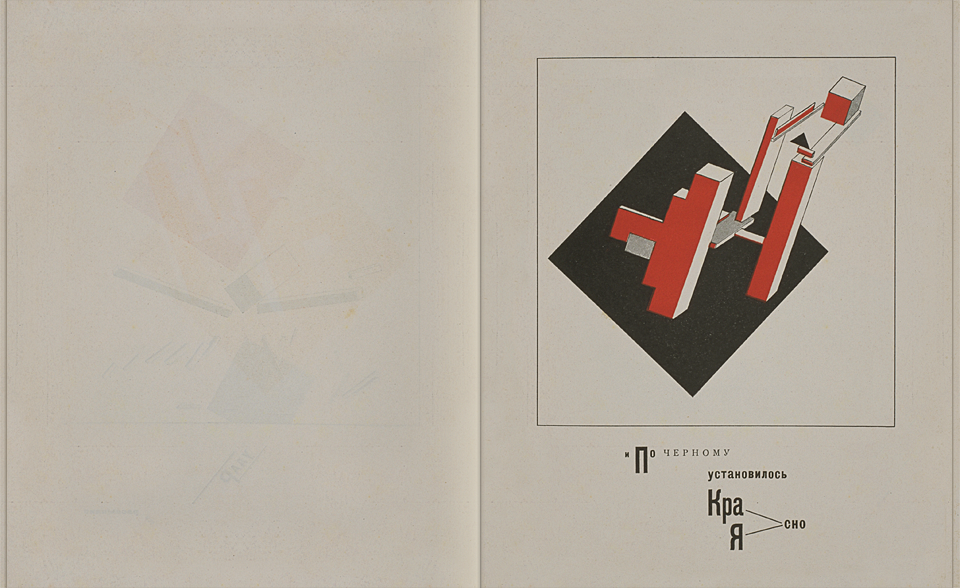
9/19 Push an image to enlarge
(♪) And, on the black, the red settled firmly.
About Two Squares
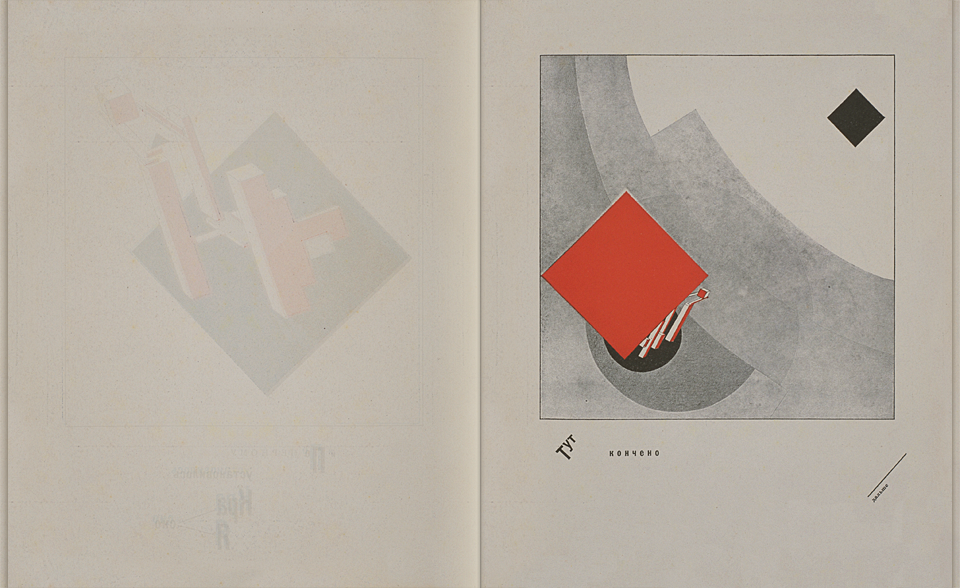
10/19 Push an image to enlarge
(♪) Here it ended. Continued.
About Two Squares

11/19 Push an image to enlarge
(♪) UNOVIS. Constructed 1920 Vitebsk.
No narration on page 12
About Two Squares

12/19 Push an image to enlarge
No narration on page 13
About Two Squares

13/19 Push an image to enlarge
No narration on page 14
About Two Squares

14/19 Push an image to enlarge
No narration on page 15
About the author 1/4
By El Lissitzky (1890–1941)\
1)
Russian avant-garde artist, architect, and designer El Lissitzky was born Lazarap’ Markovich Lisiitskii to a Jewish family in Pochinok, Smolensk, in western Russia.In 1909, he entered technical school at Technische Hochschule in Darmstadt, Germany and later studied at the Polytechnic Institute of Riga, Latvia. He started book design in 1916 and in 1919 illustrated picture books such as “Kozochka” (Dear Little Goat). In the same year he was invited by artists Vera Ermolaeva and Marc Chagall to teach architecture at the Vitebsk Art School, Belorussia. Greatly respecting Kazimir Malevich as a founder of suprematism, Lissitzky became one of the founding members of UNOVIS (meaning “champions of the New Art”) organized by Malevich.
15/19
No narration on page 16
About the author 2/4
2)
The encounter with Malevich greatly influenced his art. Returning to his home country in 1921, Lissitzky began teaching at the VKHUTEMAS art academy, but soon after left for Germany, where he published About Two Squares. His pioneering activities in book design, design of an international exhibition hall, magazine layout, and photos for the magazine SSSR na stroike (Building the Soviet Union) and many other design genres are colorful and creative expressions of his interpretation of suprematism that continued until his death from a lung condition in 1941.
16/19
No narration on page 17
About the author 3/4
3)
His leading work in picture books, About Two Squares is subtitled “Story of Suprematism about Two Squares in Six Dimensions.” Beginning with an idea developed in Vitebsk in 1920, the book was printed under his close supervision at Leipzig’s best printing company. In six scenes, two squares in red and black appear, with the red square finally triumphing. The red square is apparently meant to stand for revolution and order while the black square represents disorder and insecurity. Using different sizes of type and lines used to evoke images of space, the lettering of the text and illustrations merge, making this book a quite abstract yet distinctly ideological work. It is dedicated “To all children.”
17/19
No narration on page 18
About the author 4/4
4)
How children of those days reacted to such avant-garde books about the revolution is hard to say. The name of the suprematist group “UNOVIS,” printed under the red square at the end of the story, is a vivid indication of Lissitzky’s statement as an artist.
18/19
Contents
19/19
